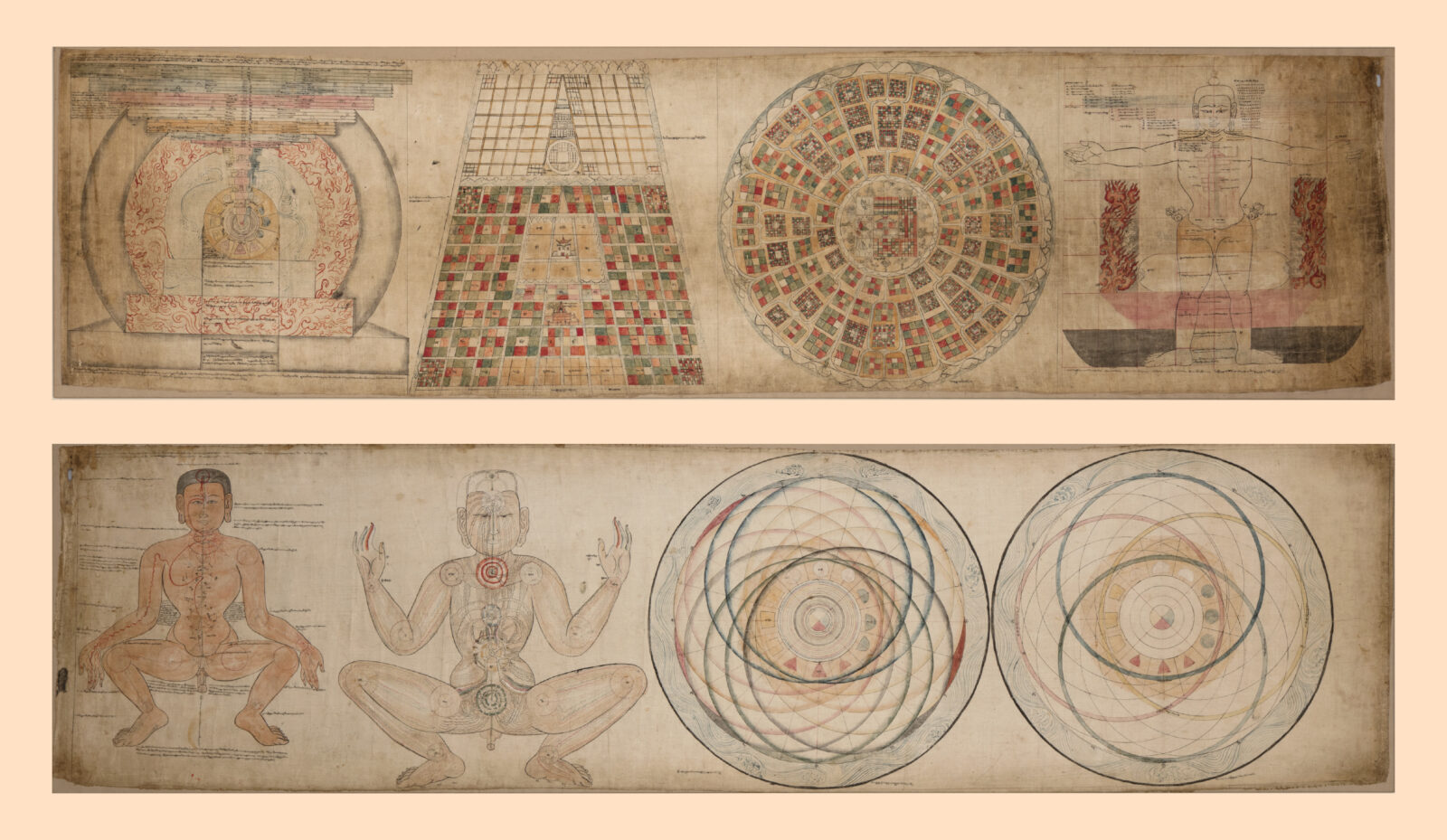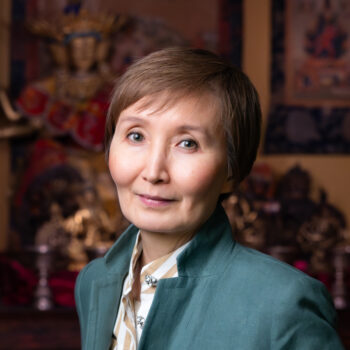
Kalachakra Cosmology Illustration; Tibet; 16th century; pigments on cloth; Rubin Museum of Himalayan Art; C2009.9

Kalachakra Cosmology Illustration; Tibet; 16th century; pigments on cloth; Rubin Museum of Himalayan Art; C2009.9
The Buddhist cosmological view expressed in the texts and practices of the Kalachakra Tantra, known as the Wheel of Time, explains and integrates observed relationships between the human body and mind with the external universe while foregrounding human experience. It combines a fundamental Buddhist concept—that all of existence is impermanent and has the nature of time—with another essential notion: that the same particles comprising the elements of earth, fire, water, air, space, and awareness make up both the human body and mind and the cosmos.
Developed in the eleventh century as the latest comprehensive system of tantric theory and practice, Kalachakra describes the association between the internal and external Kalachakra as cycles of time. As presented in Tibetan Kalachakra traditions, the astrological and medical knowledge of how celestial bodies correlate with the body and mind may help facilitate the advancement of human potential and well-being.
Kalachakra Cosmology Illustration; Tibet; 16th century; pigments on cloth; Rubin Museum of Himalayan Art; C2009.9

Elena Pakhoutova is senior curator, Himalayan art, at the Rubin Museum of Himalayan Art and holds a PhD in Asian art history from the University of Virginia. She has curated several exhibitions at the Rubin, including Death Is Not the End (2023), The Power of Intention: Reinventing the (Prayer) Wheel (2019), and The Second Buddha: Master of Time (2018). More →
Get the latest news and stories from the Rubin, plus occasional information on how to support our work.